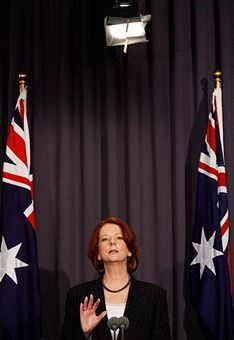 ‘The definition of an Independent Member of Parliament, viz., one that could
not be depended upon.’ – Former British prime minister, the Earl of Derby to Queen Victoria.
‘The definition of an Independent Member of Parliament, viz., one that could
not be depended upon.’ – Former British prime minister, the Earl of Derby to Queen Victoria.
In the August 21 federal election down under, the Labor government of Prime Minister Julia Gillard copped a stunning rebuke from the Australian people. Consider this: Tony Abbott’s centre-right Liberal-National Coalition won nearly half a million more votes than the Australian Labor Party. It secured more seats than the ALP (73 to 72 in the 150-seat House of Representatives). And the Labor administration became the first first-term government since 1931 to lose a parliamentary majority. So how does Labor claim a mandate to govern?
The two rural Independents, on whose support Julia Gillard now depends, represent electorates that are overwhelmingly conservative. All the available evidence — the senate vote on August 21 and the subsequent opinion polls in the two electorates – indicates that the electors of these Independent seats strongly favour the Coalition over Labor.
And yet, the suddenly famous duo of the 60-year-old Tony Windsor and the 40-year-old Rob Oakeshott sided with this unpopular Labor government whose prime minister, the Lady Macbeth of Australian politics, lacks any real legitimacy.

Britain’s best politics newsletters
You get two free articles each week when you sign up to The Spectator’s emails.
Already a subscriber? Log in







Comments
Join the debate for just £1 a month
Be part of the conversation with other Spectator readers by getting your first three months for £3.
UNLOCK ACCESS Just £1 a monthAlready a subscriber? Log in